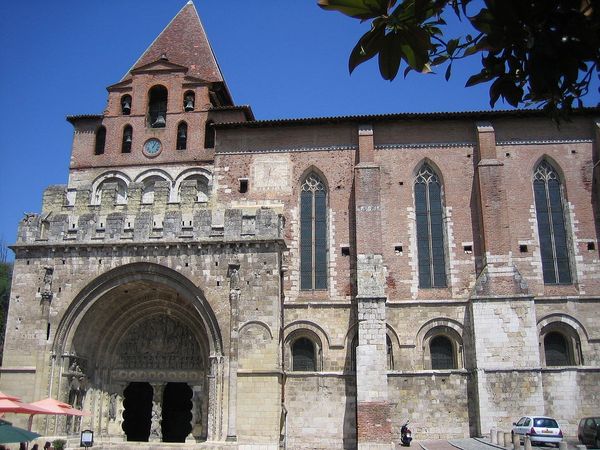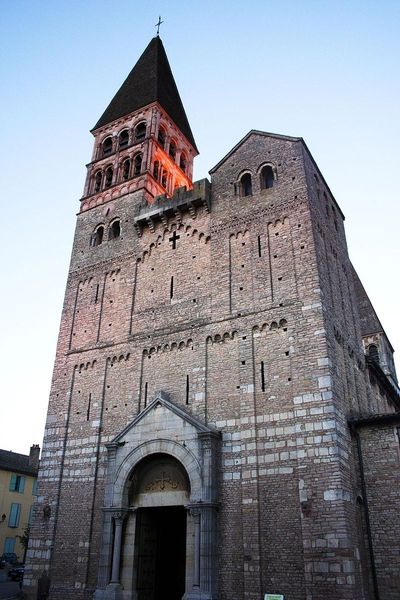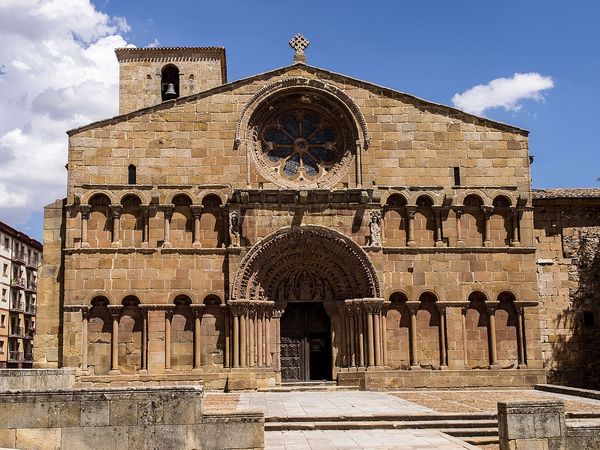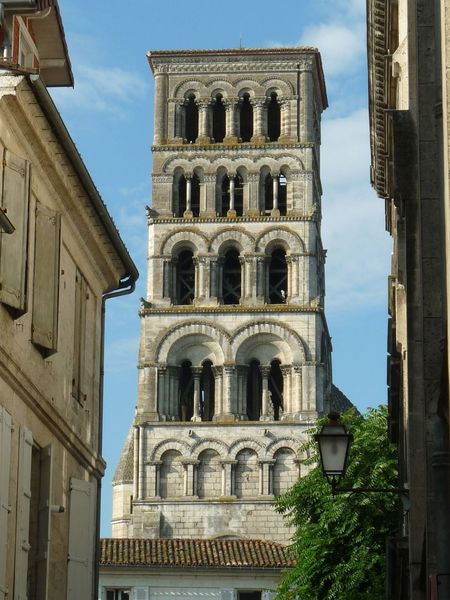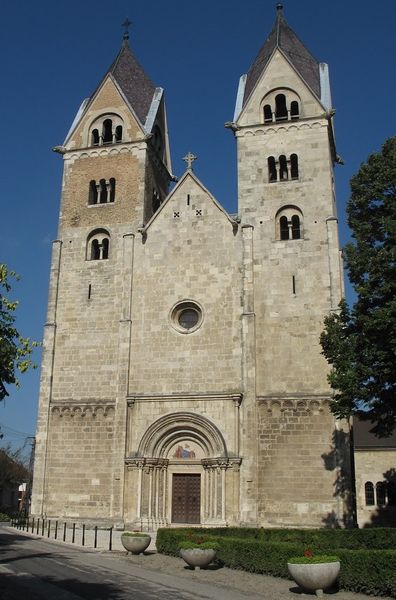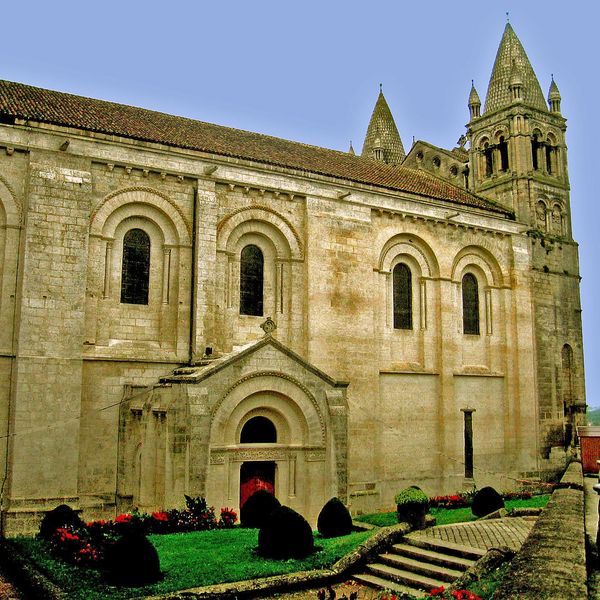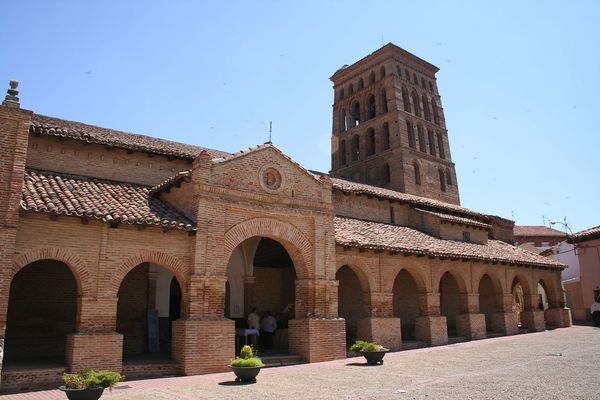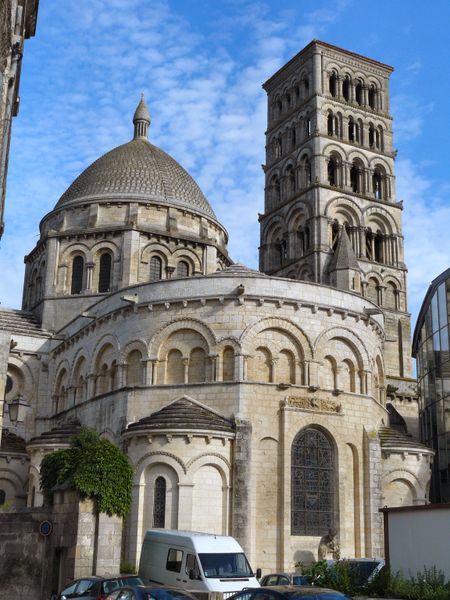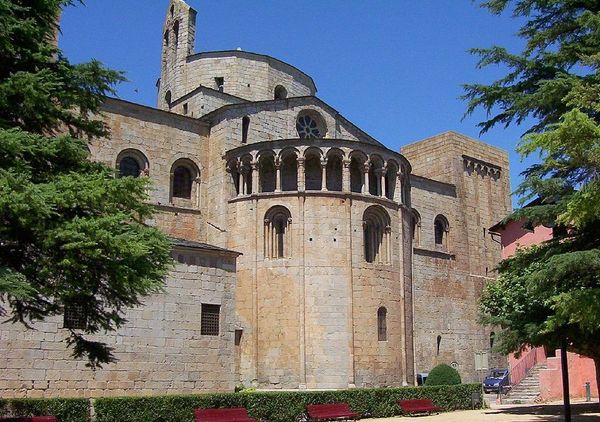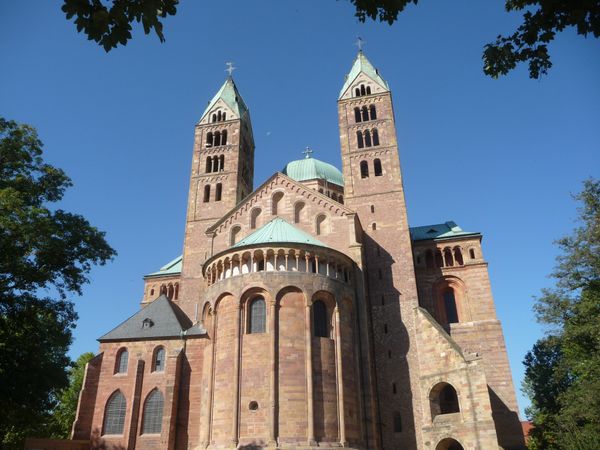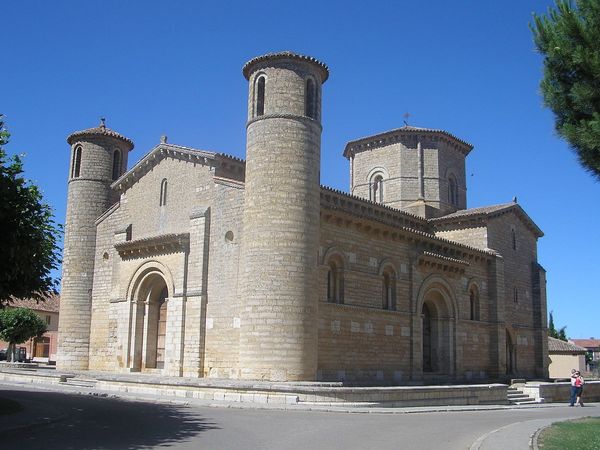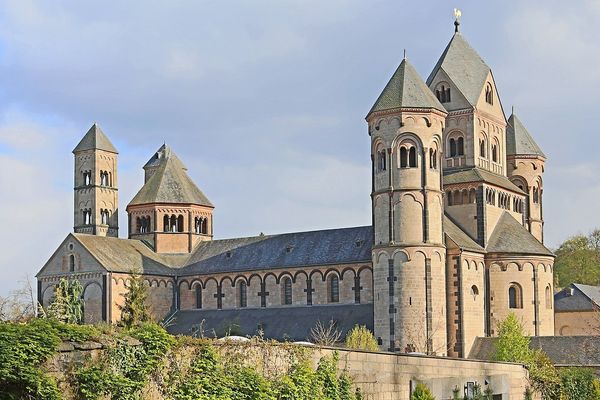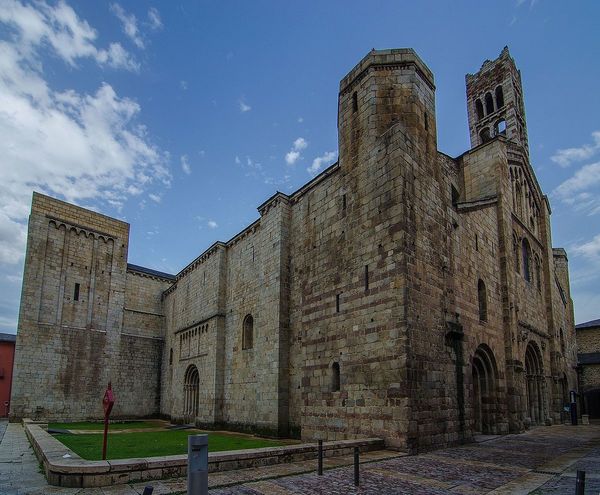
public-art, photography, architecture
#
public art
#
medieval
#
landscape
#
public-art
#
historic architecture
#
photography
#
romanesque
#
architecture
Copyright: Public domain
Editor: We’re looking at an image of the San Lorenzo Church in Sahagún, Spain, built around 1110. It seems primarily constructed of brick. My initial reaction is one of geometric solidity— a tower rising above rounded forms. What strikes you most about its architecture? Curator: The emphasis on modularity, particularly evident in the brickwork, commands immediate attention. The uniform size and arrangement of the bricks articulate the structure's tectonic logic, reducing the entire edifice to an assembly of discrete, self-similar units. Notice also the calculated rhythm established by the arches and windows, how the intervals shift across different levels. Does that structural rhythm elicit any particular emotion in you? Editor: I hadn't considered it that deeply. The rhythm does suggest a kind of purposeful progression, maybe even aspiration, as the tower ascends. Curator: Precisely. Consider, too, the interplay between the cylindrical forms and the cuboid tower. This tension introduces a visual dialogue between organic and geometric principles. How might you interpret the use of simple forms repeated across the whole building? Editor: Perhaps it is a way to make the imposing church feel more accessible. The forms are visually simple. I do see a system of discrete components which allows me to consider how it has been constructed. Curator: Yes, the construction does allow one to appreciate each level of labor required. I now appreciate how each simple, material addition creates visual rhythm. Editor: This formalist approach helps break down my initial perception, enabling a deeper understanding of its structure.
Comments
No comments
Be the first to comment and join the conversation on the ultimate creative platform.
